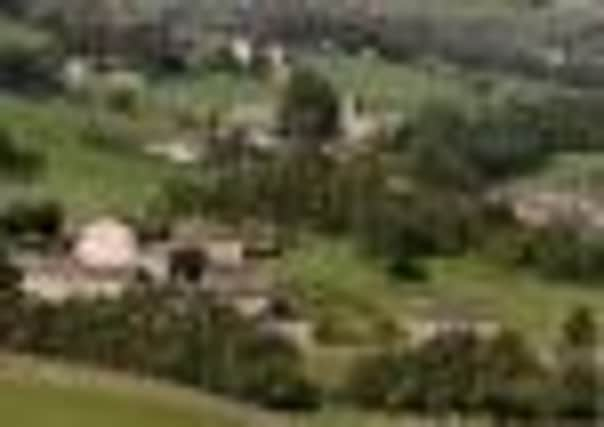Exclusive: Blow for young house hunters in remote Dales


Decaying farm buildings and miners’ cottages dating back to the 15th century in some of the most isolated settlements in the Yorkshire Dales National Park will not qualify to be converted into homes under the blueprint to address the lack of properties.
A Government planning inspector, David Vickery, will be urged to revise the first planning document of its kind when he considers a draft version drawn up by the Yorkshire Dales National Park Authority at a three-day public hearing from tomorrow.
Advertisement
Hide AdAdvertisement
Hide AdThe national park authority’s member champion for planning, Coun John Blackie, said it is crucial the planning strategy is overhauled to permit building conversions in the remotest settlements in the Dales.
The current criteria set out in the draft document will mean only property owners in settlements with 20 or more dwellings will be able to apply for planning permission to convert redundant barns and other empty buildings.
Coun Blackie, who will be making representations at the public hearing, said: “Throughout the Dales, and especially in the Upper Dales, are some of the remotest and most isolated communities in the country.
“The need for affordable housing is evident across the whole of the national park, but these small villages and hamlets are going to miss out under the current proposals. We are missing a trick, as there is a ready-made supply of empty buildings that could be converted into new homes for the people living in the communities.
Advertisement
Hide AdAdvertisement
Hide Ad“Local people own these buildings, yet they will not be able to convert them to create new homes for their sons or daughters who want to stay in the community.
“Young people simply cannot afford the price of property at the moment and are being forced to move away.”
The Yorkshire Post revealed earlier this month that new policies had been drawn up over the past five years to provide a far more pro-active approach to address the lack of affordable housing in what is one of the nation’s property hotspots.
While property markets have slumped across many parts of the country, the Yorkshire Dales has weathered the economic downturn and an average home now costs £287,180. But a quarter of all incomes for the national park’s 10,000 households average just £16,264, with the local economy centred on the relatively poorly paid farming and tourism sectors.
Advertisement
Hide AdAdvertisement
Hide AdCoun Blackie pointed towards the remote Arkengarthdale as one of the main areas which will miss out on converting redundant buildings. The dale has one main settlement, the village of Langthwaite, but derelict cottages built for workers in the lead mines and dating back to the 1400s are scattered across the hillsides.
Coun Blackie said the empty cottages could be brought back into use to provide one-bedroom or two-bedroom properties ideal for first-time buyers.
The national park authority’s chairman, Coun Carl Lis, admitted members had faced an “extremely difficult task” while drawing up the planning document.
He added: “I have so much sympathy with these communities desperate for affordable housing, as many are dying with young people being forced to move away. But this is a national park and our primary purpose as an authority has to be to protect the landscape.”
Advertisement
Hide AdAdvertisement
Hide AdThe bulk of the proposed development would centre on four main locations, Hawes, Grassington, Sedbergh and Reeth. But larger villages including Malham, West Witton, Dent and Aysgarth are all included as potential development sites.
Mr Vickery will oversee the public hearing from tomorrow until Thursday in Bainbridge and then Grassington for the final day. A decision is expected in the spring.
Concern on scale of development
THE new strategy will be the first time that an over-arching planning blueprint has been created to pinpoint specific locations for development since the Dales national park was created in 1954.
A total of 143 sites were initially earmarked after landowners were asked to come forward with potential locations. A shortlist of 35 sites covering a total of 26 acres has been finalised. About 240 homes could be built across these sites over the next decade, although developers will still need to be found and planning consent will have to be obtained from the authority.
However, concerns have been raised by local communities as well as the Yorkshire Dales Society about the scale of development.